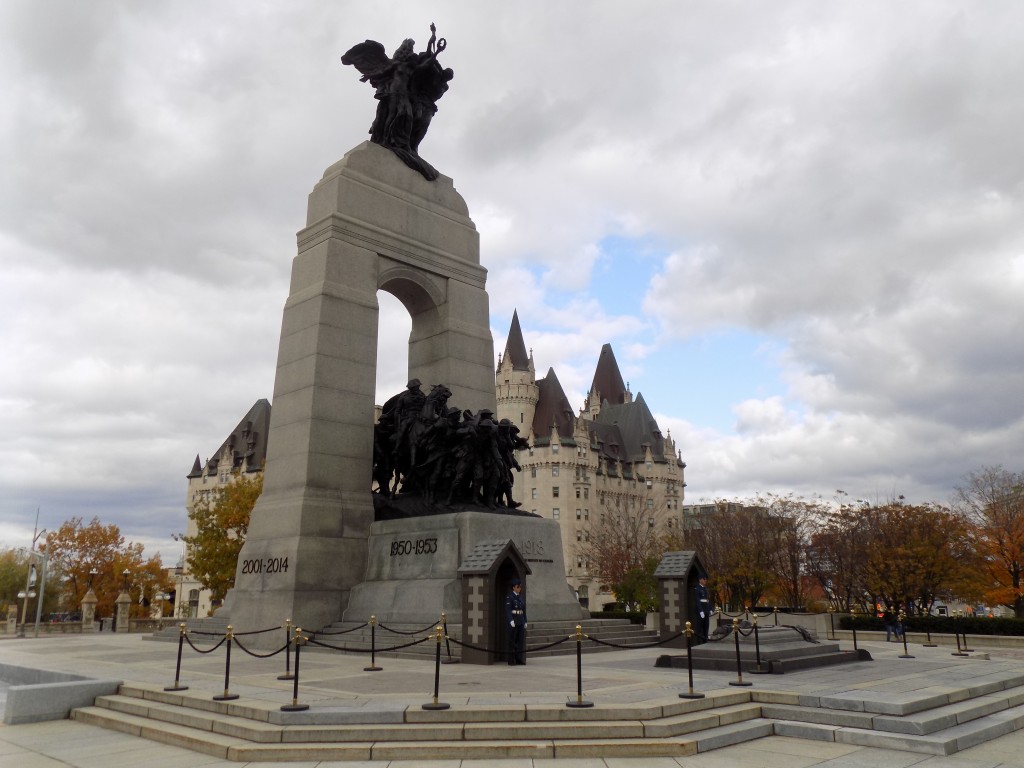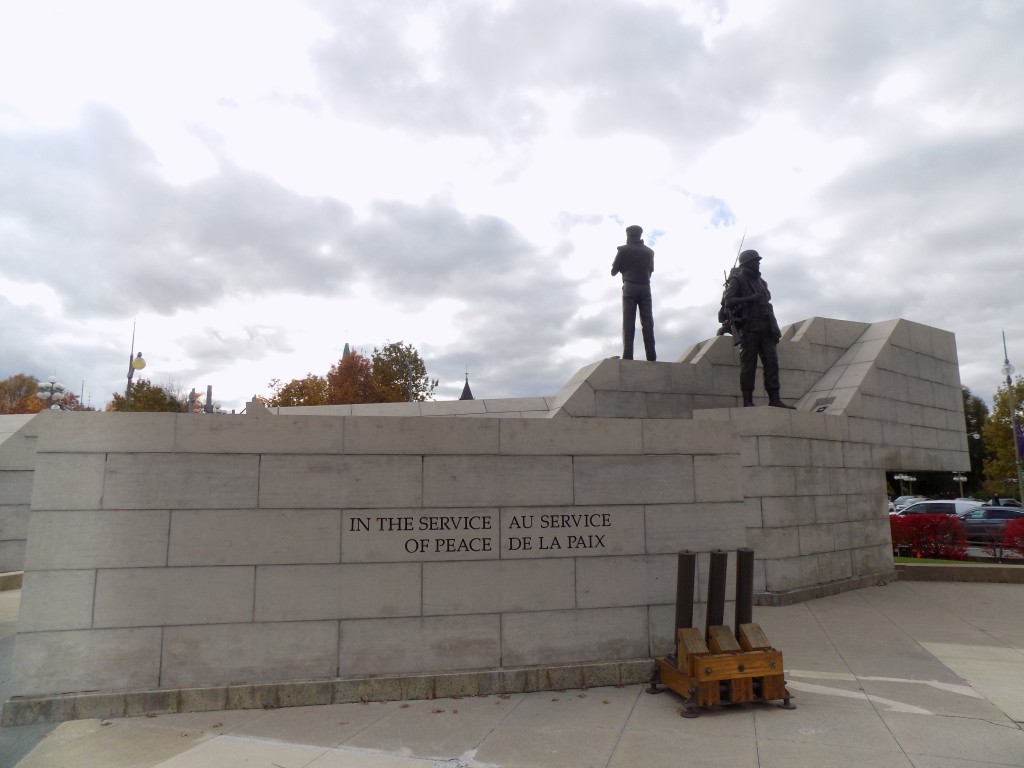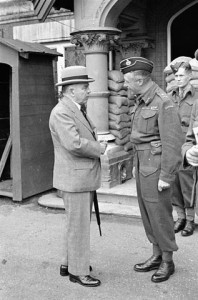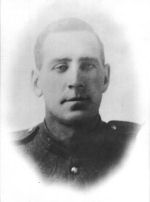Reflecting on Remembrance Day

The National War Memorial in Confederation Square in Ottawa. The memorial is the site of the national Remembrance Day ceremony each November 11th. It was designed by Vernon March and dedicated by King George VI in 1939. The monument features the dates of all major conflicts Canadians have fought in and the Tomb of the Unknown soldier is located at the front of the monument. Aviators from the Royal Canadian Air Force were standing guard when this photo was taken. Photo: James Morgan
It’s Remembrance Day in Canada and Veteran’s Day in the U.S. It’s a day of mixed sentiments and emotions that means different things to everyone. Those who served or are serving undoubtedly feel differently about the day than those of us who did not. There is a generational difference, too. Those who lived through or served in World War II or Korea have a different remembrance experience than those who served or grew up the years of Canada’s numerous United Nations peacekeeping missions, the Persian Gulf War, and Afghanistan.

The Memorial Arch links the East and West Memorial Buildings over Lyon Street in downtown Ottawa. The arch is actually Canada’s official World War II memorial but often goes unnoticed. “All these were honoured in their generations and were the glory of their times,” which is from Ecclesiastes 44:7 in the Bible is engraved on the arch. The sculpture in the foreground, called “The Canadian Phalanx,” by Ivan Mestrovic is actually in honour of World War I veterans. Photo: James Morgan
In our part of the world, the weather is invariably bad on this day. Temperatures are cold, there is usually wind, and the skies often release rain or snow. It’s almost as if nature delivers us a bit of meteorological misery so we can better empathize with the unpleasantness of combat. It wouldn’t feel right to stand as a spectator at a November 11 ceremony without frozen hands and sore ears. The weather will not stop hundreds of thousands of people from standing by war memorials large or small to remember veterans from their community or across their country.

The Peacekeeping Monument across from the National Gallery of Canada and Notre Dame Cathedral Basilica in Ottawa recognizes Canadian military personnel who have served in United Nations Peacekeeping missions since 1956. Photo: James Morgan
Remembrance Day in Canada, as in the U.S., was originally called Armistice Day. November 11 was selected because it was on that day in 1918 at 11:00 am that the armistice ending World War I was signed. In the 99 years since, it’s become the day where Canadians both remember and memorialize those who served. Remembrance Day ceremonies across Canada are generally held around 11:00 am for historical reasons. Most events include the standard two minutes of silence, a bugler plays The Last Post, prayers are said, names are read, and the national anthem and hymns like Abide With Me are sung.

Wounded Canadians on the way to an aid post during the Battle of Passchendaele in 1917. Library and Archives Canada, MIKAN# 3194341.
The World War I connection with Remembrance Day has more significance this year. In April, the 100th anniversary of the Battle of Vimy Ridge was commemorated. It was the first battle where all four Canadian divisions fought together for the first time, making it the first victory the 50 year-old country could claim as its own. The centennial anniversary of the Battle of Passchendaele is being observed right now, too. Dr. Daniel Pellerin, an Ottawa military historian said that the portion of the battle Canadian soldiers were prominent in was really the Second Battle of Passchendaele and was part of the Third Battle of Ypres, a larger, British-led offensive that took place in Belgium during 1917. The Canadians, led by Lieutenant General Sir Arthur Currie, captured the village of Passchendaele from the Germans. The village and area surrounding it was already completely destroyed because of previous fighting, but it was strategically important because having the territory would allow for the Allies to better observe German positions and launch further direct attacks.
Miserable would be an understatement to describe the conditions at Passchendaele. Pellerin said that the mud and destruction came to symbolize the futility of the war and senseless waste of human life for minimal military gain. However, Canada was victorious. The three-phase attack began on October 26, and the final one was on November 6. The campaign was over on November 10. 15,654 Canadians died at Passchendaele, just short of the 16,000 casualties General Currie had predicted.

Major-General George R. Pearkes, right meeting with Prime Minister William Lyon Mackenzie King during a visit to the 1st Canadian Infantry Division, August 26, 1941. Library and Archives Canada, MIKAN# 3191612
Nine soldiers were awarded the Victoria Cross—the highest military honor for valor, for their service at Passchendaele. One of them was Acting Major George R. Pearkes of 5th Battalion, Royal Canadian Mounted Rifles. He was awarded the Victoria Cross for capturing a German strong point on October 30 and 31 and holding it with the help of a small number of soldiers while wounded. Pearkes remained in the army after the war and became a Major-General in World War II. He later served as Minister of National Defence and Lieutenant-Governor of British Columbia. National Defence Headquarters in Ottawa is named after him. Others who won the Victoria Cross at Passchendaele did not survive. Private James Robertson’s platoon was caught in barbed wire, but he advanced towards a German artillery gun they were trying to capture. He captured it himself and fired it at the enemy while his platoon was able to get free and advance. He later died on the battlefield, though, when trying to rescue a wounded sniper when a shell burst next to him.
Remembering war and all of its total depravity and horror reminds us to do our best to live in peace with each other. One does not have to like war in order to remember. I’ve never had the impression that those who have served in times of conflict really liked war either. They did so out of a sense of responsibility and service. That said, the balance has to be struck between respectable, dignified remembrance and the veneration of war and politicized patriotism. I’ve seen good and bad examples as both an ordinary spectator and as a news reporter at various events over the years. I left some events feeling thankful and fulfilled that the community had honored its veterans in such a meaningful way. I left others outraged over the politicized displays and lack of reverence I’d witnessed. Take time to strike that balance today. No matter the emotions or sentiments, remembering is important.
Tags: canada, Remembrance Day, veterans









Nice memorial. I imagine there are a few Canadians who remember when Canada was great.
I remember reading a novel about American and went up to Canada to fight with them in WW I because they were tired of waiting for the US to enter the war.
I need to proof read before I click send
Nice memorial. I imagine there are a few Canadians who remember when Canada was great.
I remember reading a novel about Americans who went up to Canada to fight with them in WW I because they were tired of waiting for the US to enter the war.